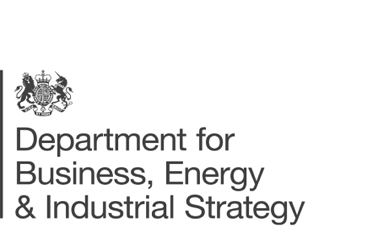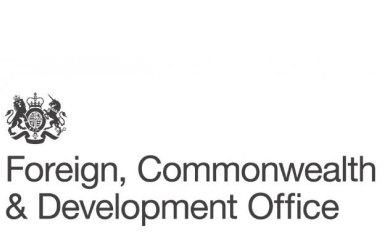In order to define the future strategic direction of standardization in the field of BIM, DIN has published the BIM standardization roadmap together with partners from business, science, the public sector and society. The task of the roadmap is to show prerequisites for the development of a broad application of BIM for practice.
https://www.din.de/de/forschung-und-innovation/themen/bim/normungsroadmap-bim
From January 2024 the OGP, in conjunction with the Government Contracts Committee for Construction, will monitor the uptake of BIM across those public bodies who are required to use the CWMF. The timeline is subject to review, any changes will be based on feedback from this monitoring process.
https://constructionprocurement.gov.ie/bim/public-sector-bim-adoption-timeline/
Building Information Modeling (BIM) for federal buildings is a cooperative working methodology with which, based on digital models of a building, the information and data relevant to its life cycle are consistently recorded, managed and exchanged between those involved in transparent communication or handed over for further processing become. This information and data is documented digitally throughout and according to a uniform structure. Further information can be found in the BMVg information flyer (see downloads). To implement the BIM method for federal buildings, the goals and implementation strategy were described in a master plan. This is, among other things, the basis for a BIM manual in which the work aids (AH) required for operational safety are gradually developed and published for all relevant subject areas. The master plan and completed AH are available for download in the download area.
https://www.fib-bund.de/Inhalt/Themen/BIM_fuer_Bundesbauten/
The industrial strategy highlights the need for a green, digital and sustainable construction ecosystem. Several other European initiatives emphasize the role of construction in achieving goals such as renewal, circularity, climate adaptation and mitigation or employment. EC legislative initiatives, directly or indirectly related to construction, introduce changes in the industrial ecosystem.
In 2015, the BIM Laboratory of Santa Catarina was created, known as LaBIM-SC, which was part of the BIM GOV SUL Network together with the states of Paraná and Rio Grande do Sul. LaBIM-SC was in charge of preparing case studies, with the aim of maximizing the potential gains with the use of the BIM methodology applied to projects, execution and inspection of works, as well as management and operation of assets.
There are numerous initiatives within the scope of the Federal Government for the adoption of BIM in Brazil, one of them is the publication of Decree nº 9.983, in 2019, which established the National Strategy for the Dissemination of BIM. This action, in addition to structuring the adoption of BIM at the federal level, also fostered and encouraged the use of BIM in state projects and works.
In order to coordinate and structure BIM actions in Catarina, Decree No. 1,370 of 2021 was published, which establishes the State Strategy for the Implementation and Dissemination of BIM in Santa Catarina (BIM SC Strategy) and the Technical Committee of the BIM SC Strategy (CT-BIM SC), currently formed by eleven public entities. This document shares the BIM Roadmap as well as the 10 objectives of the strategy which include:
- Disseminate the BIM concept and its benefits
- Coordinate the structuring of the public sector for the adoption of BIM
- Promote organizational, cultural and process changes for the adoption of BIM
- Create conditions for the adoption of the BIM methodology throughout the construction life cycle
- Stimulate and promote training in BIM
- Propose regulatory acts that establish parameters for purchases and public contracts with the use of BIM
- Develop technical standards, guides and specific protocols for the adoption of BIM
- Develop the portal and BIM SC library
- Stimulate the development and application of new technologies related to BIM
- Encourage competition in the market through neutral standards of BIM interoperability
https://www.bim.sc.gov.br/c%C3%B3pia-cadernos-t%C3%A9cnico-bim-sc
An archive version of this information article has been created if the original is no longer accessible (Archive information from January 2024)
This is the Dubai e-submission BIM Roadmap, published by the RTA
https://bim.geodubai.ae/Documents/Dubai_BIM_Roadmap.pdf
An archive version of this information article has been created if the original is no longer accessible (Archive information from January 2024)
Plan BIM Peru is the programme supported and promoted by the Peru Ministry of Economy & Finance (MEF) for the successful adoption of BIM Methodologies in public infrastructure investment throughout the country. Within the framework of Plan BIM Peru, BIM is defined as a collaborative work methodology for the management of public investment information, which makes use of an information model created by the parties involved, to facilitate multi-year programming, formulation, design, construction, operation and maintenance of public infrastructure, ensuring a reliable basis for decision-making. BIM does not only refer to the use of technological tools. Its main objective is to ensure efficient information management. BIM is essential for the planning and execution of an investment, from the definition of asset requirements to the end of their use, covering their conception, development, operation, maintenance and disposal.
Plan BIM Peru is the policy measure that defines the national strategy for the progressive implementation of the adoption and use of BIM in the processes of the phases of the investment cycle developed by entities and public companies subject to the National System of Multiannual Programming and Investment Management, in an articulated and concerted manner, and in coordination with the private sector and academia. Plan BIM Peru was born as a political measure of the National Competitiveness and Productivity Plan, recognizing the need to modernize and digitize the systems for the formulation and evaluation, execution and operation of investment projects. The resources on the website help with the implementation of BIM.
PlanBIM Peru Implementation Plan and Roadmap
An archive version of this information article has been created if the original is no longer accessible (Archive information from January 2024)
BIM is a high-potential future innovative technology with high potential for exchanging and utilizing building information. The World Economic Forum (’16) selected BIM as a ripple technology for the building and construction industry. BIM-based design is effective in improving design office work efficiency and productivity by improving design quality by minimizing construction errors. This BIM roadmap document looks at how BIM should be implemented, the challenges and how these can be addressed.
The main part of this document looks at the diagnosis of problems, these include:
1. The need to improve standards, systems and administrative systems for BIM utilization. There is currently an inadequate practical application of guidelines because the standards for creating BIM models for each design and construction stage and submitting BIM models/books are not specific
2. The lack of infrastructure for BIM utilization and insufficient technological development. International standards ISO 16739 and ISO 19650 were enacted, but in the case of a domestic BIM national standard and data management environment there is insufficient basis for BIM utilization.
3. There is insufficient training for BIM. Projects are currently outsourced to BIM-specialized companies due to lack of BIM performance of design practitioners due to scattered educational programs and BIM certification operation.
4. There is insufficient BIM integrated management due to lack of an official BIM operating organization. Establishment of a BIM implementation strategy for BIM-related policies, R&D and revitalization is needed.
The Philippines Department of Trade and Industry (abbreviated as DTI) is the executive department of the Philippine government tasked as the main economic catalyst that enables innovative, competitive, job generating, inclusive business, and empowers consumers. It acts as a catalyst for intensified private sector activity in order to accelerate and sustain economic growth through comprehensive industrial growth strategy, progressive and socially responsible trade liberalization and deregulation programs and policymaking designed for the expansion and diversification of Philippine trade, both domestic and foreign.
The DTI, through the Construction Industry Authority of the Philippines (CIAP), and the Philippine Contractors Association (PCA) launched the Construction Industry Roadmap 2020-2030 on 28 March 2019 with the theme ‘Tatag at Tapat 2030’, which will ensure the sustainability of the construction industry’s growth and its competitiveness. The roadmap will also complement the government’s massive infrastructure program, Build Build Build. The roadmap aligns its goals and strategies with the Philippine Development Plan and the United Nation’s Sustainable Development Goals. It highlights the vision of the Philippine Construction Industry to be a global partner in building nations by 2030 through the achievement of the integrated four pillars: Productivity, Sustainability, Globalization, and Institutions.
News Announcement:
https://www.dti.gov.ph/archives/news-archives/construction-industry-roadmap-2020-2030/
Roadmap Document:
http://construction.gov.ph/wp-content/uploads/2022/07/18-PCIR-Action-Plans.pdf


